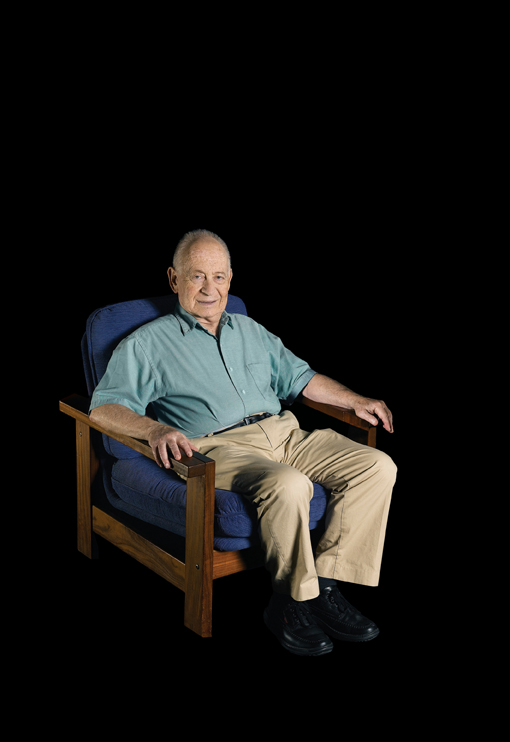Are you a journalist? Please sign up here for our press releases
Subscribe to our monthly newsletter:

External Flow
Under certain circumstances, an electric current can keep flowing forever. In some tiny circuits, this can even take place in materials that aren't superconductors and at temperatures approaching room temperature. Prof. Yoseph (Joe) Imry of the Institute's Condensed Matter Physics Department is used to seeing raised eyebrows when he presents this finding, which stems from one of his theoretical studies. Many had assumed, until that point, that a perpetually flowing electrical current can take place only in superconductors – materials that generally exist only at extremely low temperatures and whose use presents a number of difficulties. Imry and his colleagues succeeded in proving, theoretically, that current can flow forever in non-superconducting materials – on condition that the circuit is a closed loop on the mesoscopic scale (somewhere between the dimensions of everyday objects and the ultra-microscopic scale of quantum physics).
The theory was proven experimentally but, to their surprise, the volume of the electric current that kept on flowing was five to ten times greater than that predicted in the theory. This result put the whole theory in doubt. About a year ago, however, Imry came up with a theoretical solution to the problem that fits the experimental facts. This achievement has received much international attention. His insight has opened the way to developing advanced technological applications based on perpetually flowing current in a number of fields.
Prof. Yoseph Imry's research is supported by the Carolito Stiftung. Prof. Imry is the incumbent of the Max Planck Professorial Chair of Quantum Physics.

Nonresistance Heats Up
Superconducting materials – those in which electric current flows without meeting any resistance – could be used to provide efficient transmission of electrical power over long distances, to build super-magnets that help fast trains "float" over their tracks, to create sensors for detecting especially tiny magnetic fields and to develop various ultra-efficient components for future computers. Most metals can become superconductors, but the catch is that they first have to be cooled down to near-absolute-zero temperatures – a fact that has hindered their use in most applications. The ceramic superconductors developed in recent years are a slight improvement: They work at the relatively "warm" temperatures of "only" minus 140° - 200° Celsius (73° - 133° above absolute zero).
Dr. Ehud Altman of the Condensed Matter Physics Department researches, among other things, the quantum factors involved in the phenomenon of superconductivity. One of the things he has investigated is superconductors made of two different materials, each of which, on its own, is a poor superconductor or a non-superconductor. Surprisingly, two such materials, when stuck together, can sometimes result in a superconducting material that works at much higher temperatures than most existing superconductors. Altman has developed a theory for this phenomenon, and his insights might in the future assist in the development of advanced applications and superconductors that work at close to room temperature.
Dr. Ehud Altman's research is supported by the Asher and Jeannette Alhadeff Research Award.